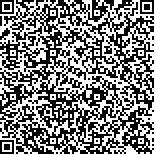下载中心
优秀审稿专家
优秀论文
相关链接
摘要

对目标空间三维—光谱信息的高分辨一体化获取与应用,是对地观测技术发展的前沿科学问题。结合高光谱成像与激光雷达测距的技术优势,对地观测多光谱/高光谱激光雷达遥感技术手段应运而生,并成为遥感技术未来发展的重要方向。本文分3个阶段详细回顾了对地观测高光谱激光雷达系统的发展历程,并针对其独有数据类型阐述了数据处理研究方面的探索研究。最后,重点分析了高光谱激光雷达在测绘领域、农林业领域的重大应用潜力,展望了未来对地观测高光谱激光雷达发展面临的机遇和挑战。
In the development of earth observation technology, the integrated acquisition and application for high-resolution 3D-spectral information of targets is one of the frontier scientific issues. In order to achieve the integrated acquisition of geometric characteristics and spectral information for targets, a lot of exploration studies have been carried out at home and abroad based on the current active and passive remote sensing technology. Combining the technical advantages of hyperspectral imaging and lidar ranging, multispectral/hyperspectral lidar for earth observation came into being and has become an important direction for the future development of remote sensing.This article reviews the development of the hyperspectral lidar system for earth observation in three stages. In the initial exploration stage, the research mainly focused on dual-wavelength lidar, mainly using specific wavelength lasers for specific applications. Then, in the progressive development stage, multispectral lidar was proposed to achieve spectral information acquisition of multi-wavelengths, including prototype systems with multiple single-wavelength lasers and supercontinuum lasers. Finally, in the gradual development stage, hyperspectral lidar was developed to obtain spectral information by more wavelengths. Which can achieve wider spectrum coverage and higher spectral resolution in visible-near infrared bands.Subsequently, the exploratory research for data processing of hyperspectral lidar was expounded. It mainly involves two aspects: processing of full-waveform data in multi-bands; geometric correction and radiometric correction. In terms of full-waveform data processing, hyperspectral lidar has better capability of full-waveform decomposition for weak echo bands and low signal-to-noise bands. In terms of geometric correction, the asynchronization caused by full-waveform pulse echo in different bands needs to be solved. And radiometric correction should be mainly focused on the influence of distance, angle of incidence and roughness of the target.In addition, this paper analyzes the potential application of hyperspectral lidar in the field of surveying and mapping, agriculture and forestry. In the field of surveying and mapping, hyperspectral lidar can be widely used for classification of targets and land cover. In the field of agriculture and forestry, hyperspectral lidar can simultaneously obtain the spatial structure and spectral information of vegetation. Thus, it provides a new method for detecting the three-dimensional distribution of vegetation physiological and biochemical characteristics. Finally, we look forward to the challenges for the future development of hyperspectral lidar for earth observation. And the direction for future development is also putted forward: miniaturization, practicality and demonstration applications.

